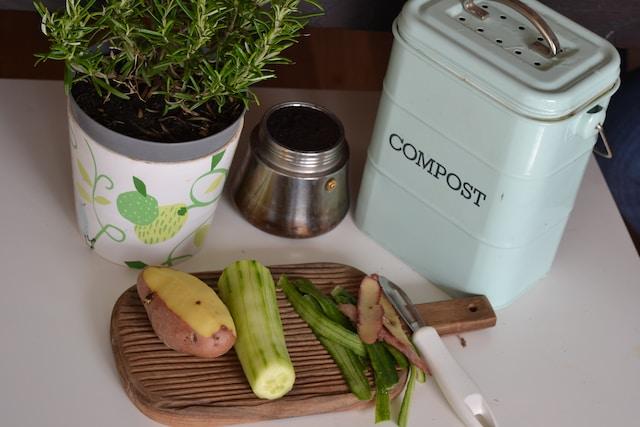
Food waste is a significant environmental issue that has the potential to generate a substantial amount of greenhouse gas emissions. This trend harms the environment and contributes to climate change.
However, families can play a significant role in reducing food waste and minimizing greenhouse gas emissions. In this blog post, Victoria Gerrard La Crosse WI will explore how families can minimize food waste and reduce their environmental impact.
Plan Meals And Purchase Only What’s Needed
Reducing food waste is an important initiative to help minimize greenhouse gas emissions, but knowing how to start can often be overwhelming. Planning meals and purchasing only what’s needed is a simple yet effective way to reduce food waste.
By creating a weekly meal plan and grocery list, families can ensure they only purchase the necessary ingredients for their meals, avoiding excess food that may go to waste.
Additionally, by being mindful of portion sizes and utilizing leftovers, families can further reduce the amount of food that goes uneaten, ultimately helping to mitigate the environmental impact of food waste.
Through these small changes, families can make a significant impact on reducing greenhouse gas emissions and preserving our planet for future generations.
Proper Storage Of Perishable Foods
According to the Natural Resources Defense Council (NRDC), about 40% of food produced in the United States is wasted yearly. Simple changes in how we store our groceries can significantly reduce food waste and the associated greenhouse gas emissions.
Familiarizing oneself with the appropriate storage conditions for different food items can help maintain optimal freshness, reducing the likelihood of spoilage and the need for early disposal. Proper storage can also help to preserve the nutritional value of food items, meaning that less produce will go to waste before it can be consumed.
By adopting these essential storage practices, families can cultivate sustainable habits that go a long way toward achieving a more environmentally conscious lifestyle.
Don’t Toss Food: Get Creative And Repurpose Food
If you have leftover food, don’t just throw it away. Get creative with it! Families can repurpose excess food items to minimize food waste.
While some foods cannot be repurposed, families can creatively use leftovers in new meals. Leftover veggies, meats, and grains can be combined into soups, salads, or casseroles. Overripe fruit can be blended into smoothies or used in baked goods.
Repurposing food is an economical way to make the most of what’s available and reduces food waste. Plenty of recipe ideas are available online for leftovers, so get creative with your cooking.
Not only can you minimize food waste, but you’ll also find new and exciting ways to enjoy your food.
Donate Excess Food To Charities
A significant way a family can play a part in reducing food waste and minimizing greenhouse gas emissions is by donating excess food to charities. Families should consider coordinating with local charities to donate excess prepared meals and non-perishable items.
This step helps reduce food waste and contributes to alleviating hunger. In America, approximately 13 million households are food insecure, and donating excess food helps reduce the need for landfills.
If you have excess food you can’t use or don’t want to eat, consider donating it to local food banks or charities. Many organizations accept donations of fresh fruits, vegetables, and non-perishable goods.
This way, you can help people in your community while minimizing food waste and reducing greenhouse gas emissions.
Reduce Portion Sizes
As we continue to focus on reducing food waste and minimizing greenhouse gas emissions, one effective strategy is to be mindful of portion sizes. While we may have grown accustomed to larger servings over the years, reducing our portions can save us money and positively impact the environment.
By serving smaller portions, we can better manage our consumption, resulting in less food waste and, ultimately, less methane gas emissions from landfills. Additionally, smaller amounts encourage us to eat more slowly, which supports digestion and overall health.
By consciously serving and consuming smaller portions, we can do our part in reducing food waste and preserving the environment for future generations.
Composting Food Scraps
Finally, families can minimize their environmental impact by composting food scraps. Composting is one of the most effective ways to reduce food waste and greenhouse gas emissions.
Instead of sending waste to landfills, the remains of fruits and vegetables are put into a compost bin to break down. When you compost, you turn your food scraps into nutrient-rich soil that you can use in your garden or flowerpots. This means you’re also reducing your need for store-bought soil.
Composting food scraps reduces methane emissions in landfills, as well as reduces household waste. It is an easy and effective way to reduce food waste.
Composting can also be a fun activity to do with your family. Start a compost bin in your backyard, or look for local composting programs.
Final Thoughts
Overall, reducing food waste is a significant way for families to minimize their environmental impact and reduce greenhouse gas emissions. By doing these strategies recommended by Victoria Gerrard La Crosse WI, families can positively affect their community’s health and well-being while reducing their environmental impact.
Remember to consider the positive impact of small changes like these in reducing food waste and greenhouse gas emissions. By working together, we can ensure a healthier planet for future generations.





